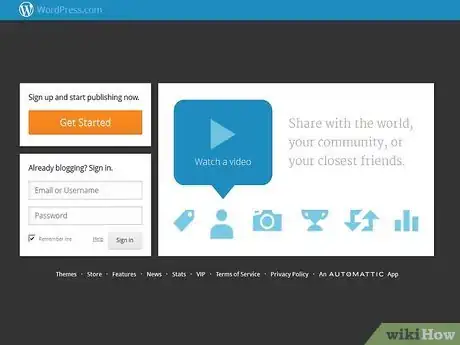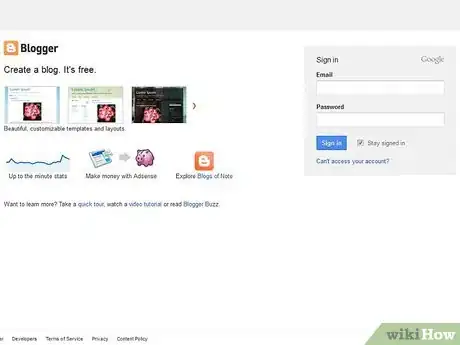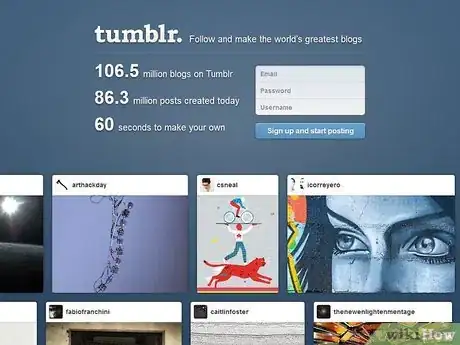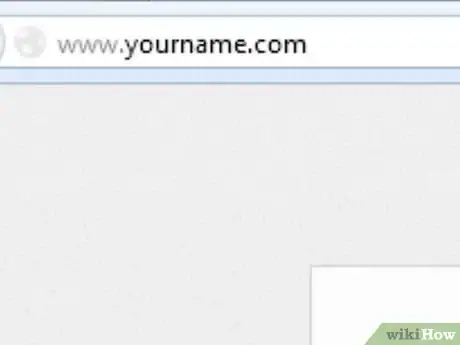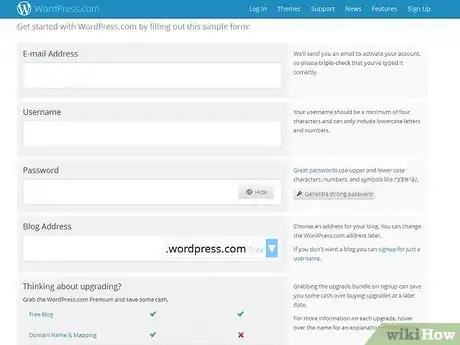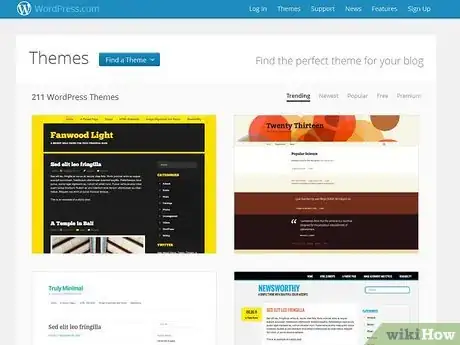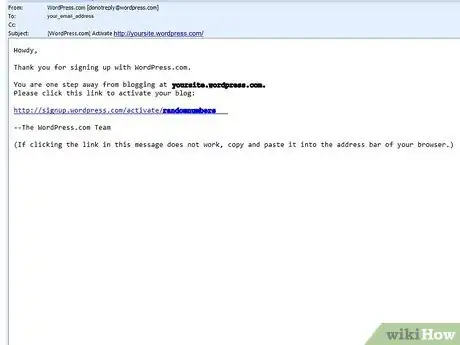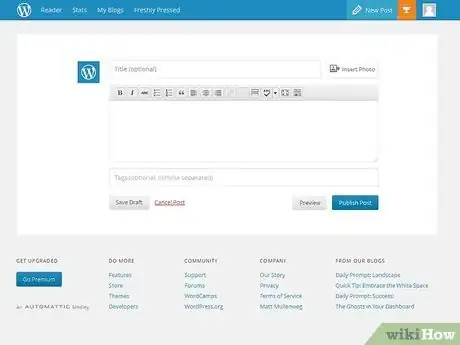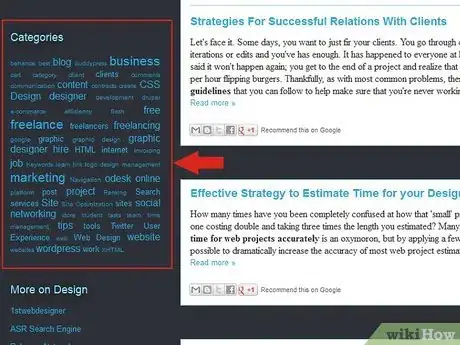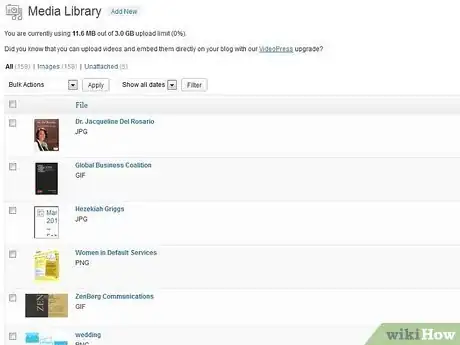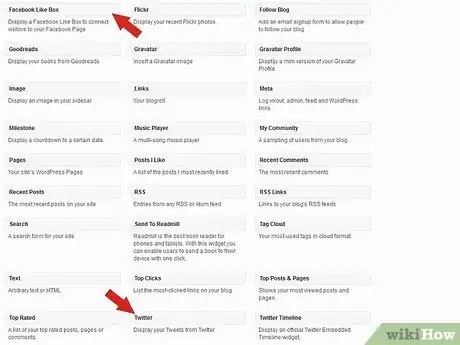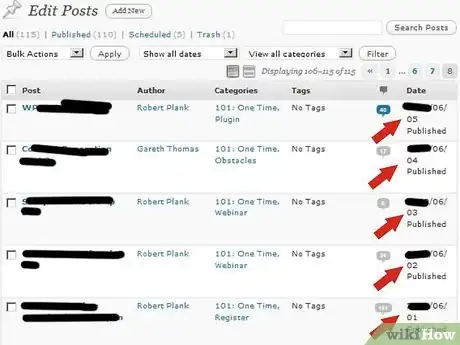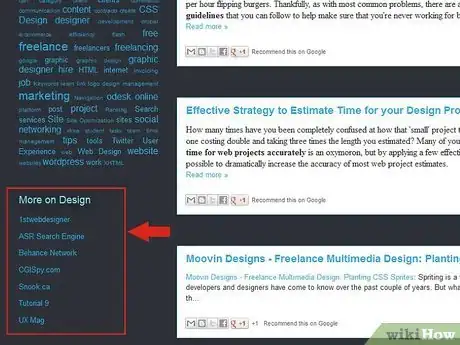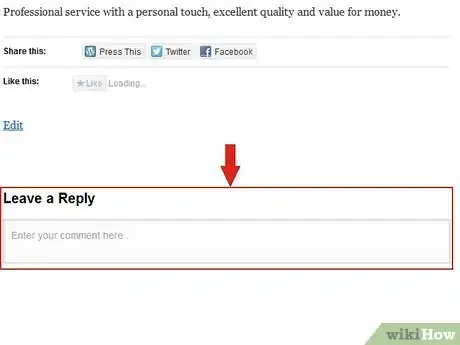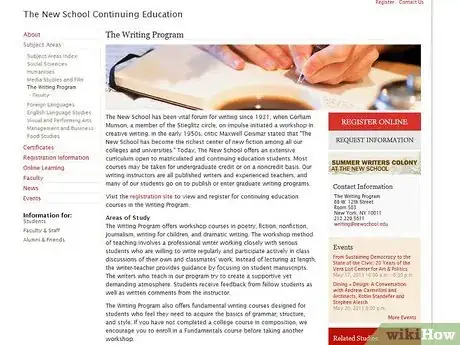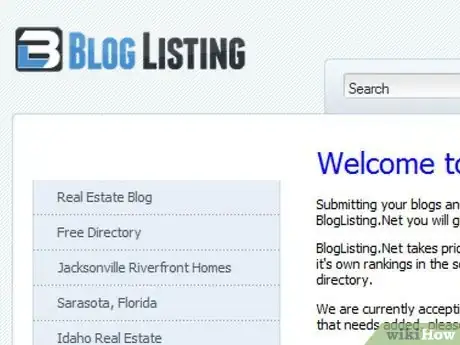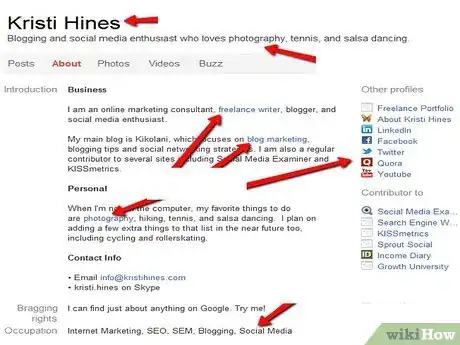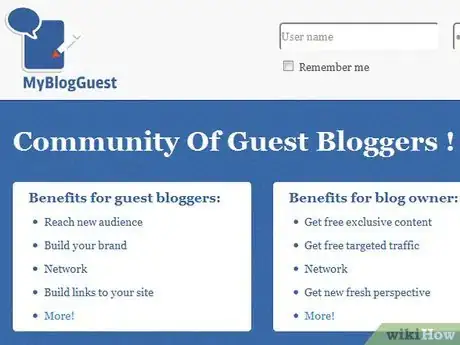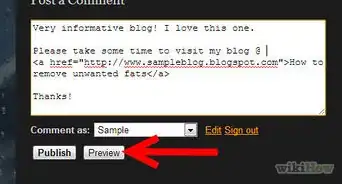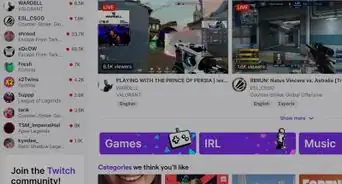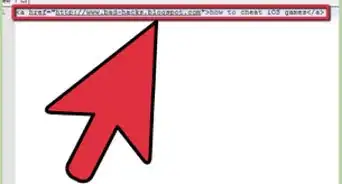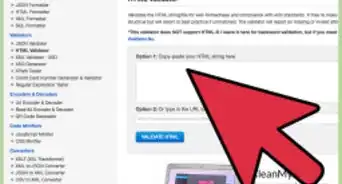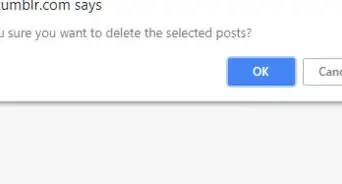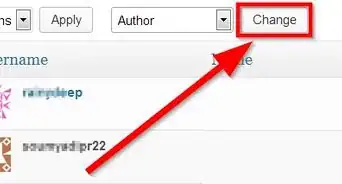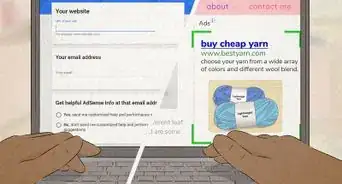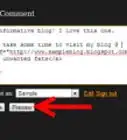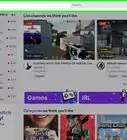This article was co-authored by Martin Aranovitch. Martin Aranovitch is a WordPress Trainer and Educator and a WordPress Writer for WPMU DEV. With over 18 years of digital marketing and website maintenance experience, Martin specializes in providing comprehensive instruction for people looking to use WordPress effectively. He holds a Bachelor’s degree in Science and Technology Studies from The University of New South Wales. Martin is also a digital publisher and the author of multiple WordPress guides and training manuals for people of all learning levels.
This article has been viewed 72,277 times.
There are millions of blogs online that allow people to share their personal and professional opinions. Free blogging is available on user-friendly sites that work by updating a pre-designed template. Learn how to start a blog for free.
Steps
Research Services
-
1Visit free blogging sites to see examples of blogging templates and features. The following are the most popular sites for free blogging:
- WordPress. The most popular free blogging platform, WordPress provides you plenty of templates and customizable features. If you want a more in depth control of your features and built in analytics, this is the best platform for a free blog.[1]
- Blogger. Google bought this popular blogging platform, and it is considered the most user-friendly option. It may not have as many customizable features as WordPress, but it is preferable for someone with fewer computer skills. Create a Google account, and click on the "More" tab to find the sign up on Google.com.
- Tumblr. This is free blogging designed for visual artists and photographers. If you are excited about posting photos and videos, they can be combined seamlessly into the available templates.
-
2Decide if you want to own your own domain name.[2]
- Free blogging sites host a domain that leads with their website and includes your name on the URL. Services like WordPress and Blogger allow you to buy your domain name for $10 to $17 per year. Although this is not technically free, it is a good idea if you are blogging for professional reasons.
Start your Blog
-
1Go to wordpress.com, blogger.com or tumblr.com. Click on the option to start to sign up for a new account.
- On Blogger, you will need to confirm your Google profile before signing up for your blog.
-
2Create your online profile. You will need to add information about your email, name and a password. Make sure it is something secure that you can remember. If you have an admin managed account, it may not be possible for you to login and access Blogger.
-
3Choose your template. Preview several options. There are hundreds to choose from on these 3 sites.
-
4Verify your account. Before your blog is available to the public, you will need to access your email and click on the verification link.
Learn to Post Effectively
-
1Start writing. Many people simply blog about what is relevant in their lives.
- When in doubt, keep it short. People usually like to scan for topics that are important to them.
-
2Use word tags and clouds to help people sift through your posts. Instead of listing blog posts by date, use the free options to categorize them by topic. Each post will apply to several topics.
- Each blogging platform gives you the opportunity to associate different keywords with your post. These will help you categorize them for your blog and on search engines.
-
3Post pictures. Include a relevant picture in each post. Each platform allows you to change the position of the photo and its size, as well as keep a media library.
- Keep a camera phone or camera with you at all times, so that you can get unique images for your posts.
- Some people sort through Google images to find media that goes with their post. Beware of using copy written images in your blog.
-
4Link your blog to your social media accounts.[3] Add widgets to your blog that bring up Facebook, Twitter or LinkedIn posts. This is especially important if you are trying to increase the number of followers or friends you have.
-
5Post at least once per week. You must remain consistent to encourage people to read your blog.
-
6Post links to other blogs or interesting topics. Your blog should regularly cross-reference other interesting people so that it becomes a source for reliable and fun information.
-
7Allow readers to comment. Create a conversation with each post.
-
8Provide your expertise. If you are writing a professional or hobby blog, giving your opinions on the industry will get more people to subscribe and read daily.
Promote your Blog
-
1Post about hot topics. Things that are in the news will bring more readers to your blog.
-
2Take writing classes, if you feel your writing is sub par.
- The most popular blogs involve people who can articulate a thought or argument. Make your main point early on in the article. Support it with evidence, such as links to news articles or photos.
-
3Start submitting to directories. Many sites keep a comprehensive list of bloggers.
- Blog directories can drive some traffic your way. Consider submitting to blog listing, blogarama and globe of blogs. Search for other options using your search engine.
-
4Go to Technorati.com to claim your blog. This site functions as a directory and ranking system for bloggers.
- Create an account. Then, write a description of your blog and the URL. You should see increased traffic if you post regularly.
-
5Learn search engine optimization (SEO). SEO allows you to use Google and other search engine crawler rules to your benefit. You will be ranked higher on search engines if you follow their best practices.
-
6Become part of the blogging community. Regularly read other people's blogs and comment on them. Post your blog's name in addition to your name.
- Important SEO topics include using keywords in the article, using keywords in the headline, learning to write meta tags, naming your images correctly and simplifying URLs.
-
7Serve as a guest blogger. Trade blogger spots with a writer you like. You can share subscribers.
Expert Q&A
-
QuestionHow do I link my blog to Facebook?
 Martin AranovitchMartin Aranovitch is a WordPress Trainer and Educator and a WordPress Writer for WPMU DEV. With over 18 years of digital marketing and website maintenance experience, Martin specializes in providing comprehensive instruction for people looking to use WordPress effectively. He holds a Bachelor’s degree in Science and Technology Studies from The University of New South Wales. Martin is also a digital publisher and the author of multiple WordPress guides and training manuals for people of all learning levels.
Martin AranovitchMartin Aranovitch is a WordPress Trainer and Educator and a WordPress Writer for WPMU DEV. With over 18 years of digital marketing and website maintenance experience, Martin specializes in providing comprehensive instruction for people looking to use WordPress effectively. He holds a Bachelor’s degree in Science and Technology Studies from The University of New South Wales. Martin is also a digital publisher and the author of multiple WordPress guides and training manuals for people of all learning levels.
WordPress Trainer & Educator If you're using WordPress, most things can be easily achieved using plugins. Using plugins, you can add content to your posts on WordPress and have it automatically display on social media sites like Facebook, Twitter, Instagram, LinkedIn, and various other sites as soon as you publish. For example, a plugin like Jetpack (made by the same people who developed WordPress), includes a tool called "Publicize" that allows you to easily connect your WordPress site to Facebook. Simply click a button, log into your Facebook account, and then follow a simple wizard to connect your site with your Facebook account in a couple of clicks.
If you're using WordPress, most things can be easily achieved using plugins. Using plugins, you can add content to your posts on WordPress and have it automatically display on social media sites like Facebook, Twitter, Instagram, LinkedIn, and various other sites as soon as you publish. For example, a plugin like Jetpack (made by the same people who developed WordPress), includes a tool called "Publicize" that allows you to easily connect your WordPress site to Facebook. Simply click a button, log into your Facebook account, and then follow a simple wizard to connect your site with your Facebook account in a couple of clicks. -
QuestionDo i have to pay when creating a blog site?
 Community AnswerIt depends on what you are using to write your blog. There are many free services, like Blogger.
Community AnswerIt depends on what you are using to write your blog. There are many free services, like Blogger. -
QuestionHow long will it take for my blog to become as big as Jake Paul's?
 MSI GuyCommunity AnswerThat depends on how hard you work on it and how much time you dedicate to it daily.
MSI GuyCommunity AnswerThat depends on how hard you work on it and how much time you dedicate to it daily.
Things You'll Need
- Blog account
- Blog domain name
- Blog topics
- Photos
- Social media accounts
- Template
- Keywords/tags
- Links
- Blog directories
- Technorati account
- SEO skills
- Guest blogs
References
- ↑ Martin Aranovitch. WordPress Trainer & Educator. Expert Interview. 30 March 2021.
- ↑ Martin Aranovitch. WordPress Trainer & Educator. Expert Interview. 30 March 2021.
- ↑ Martin Aranovitch. WordPress Trainer & Educator. Expert Interview. 30 March 2021.
- https://www.pcmag.com/archive/best-free-blogging-sites-270516
About This Article
1. Research free blogging sites.
2. Create an account.
3. Select a template.
4. Create your first blog post.
5. Use effective language and tags.
6. Post at least once per week.
7. Follow other bloggers.
8. Submit your blog to directories.

